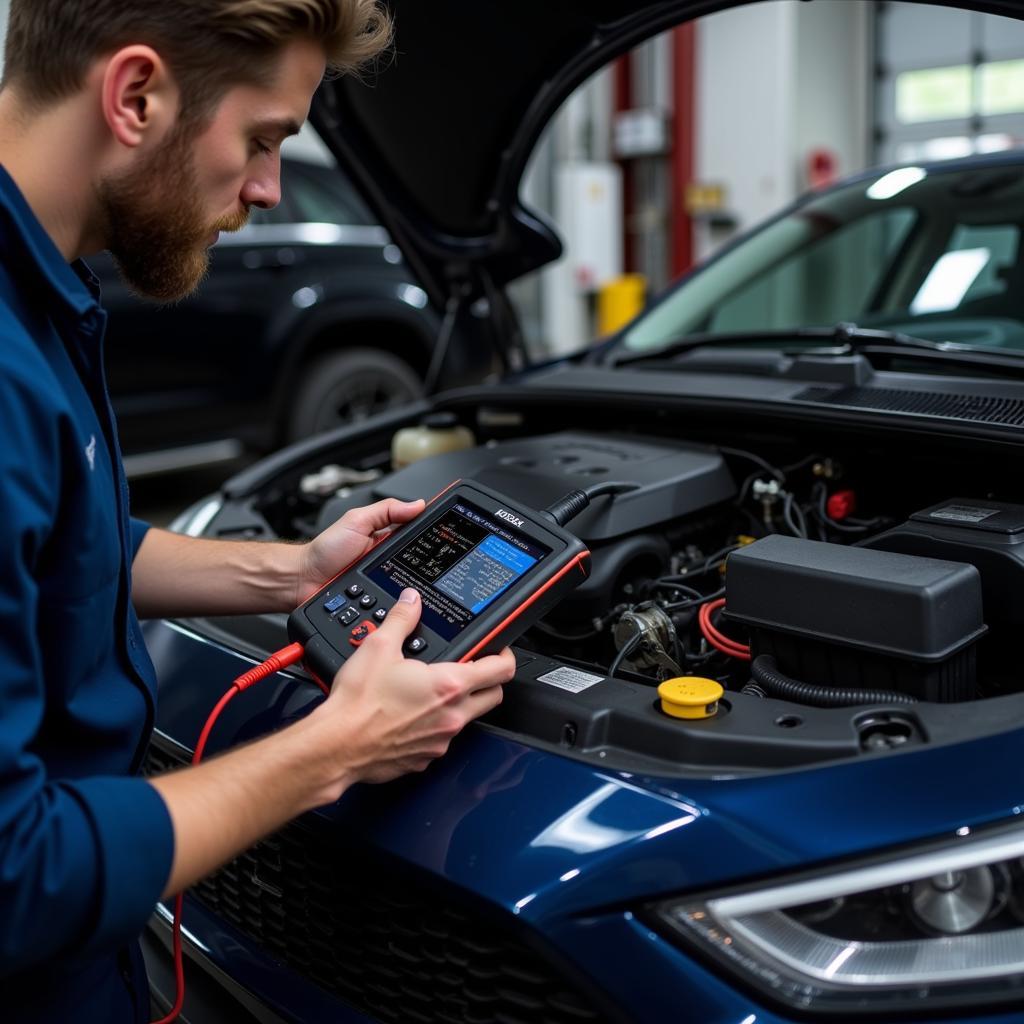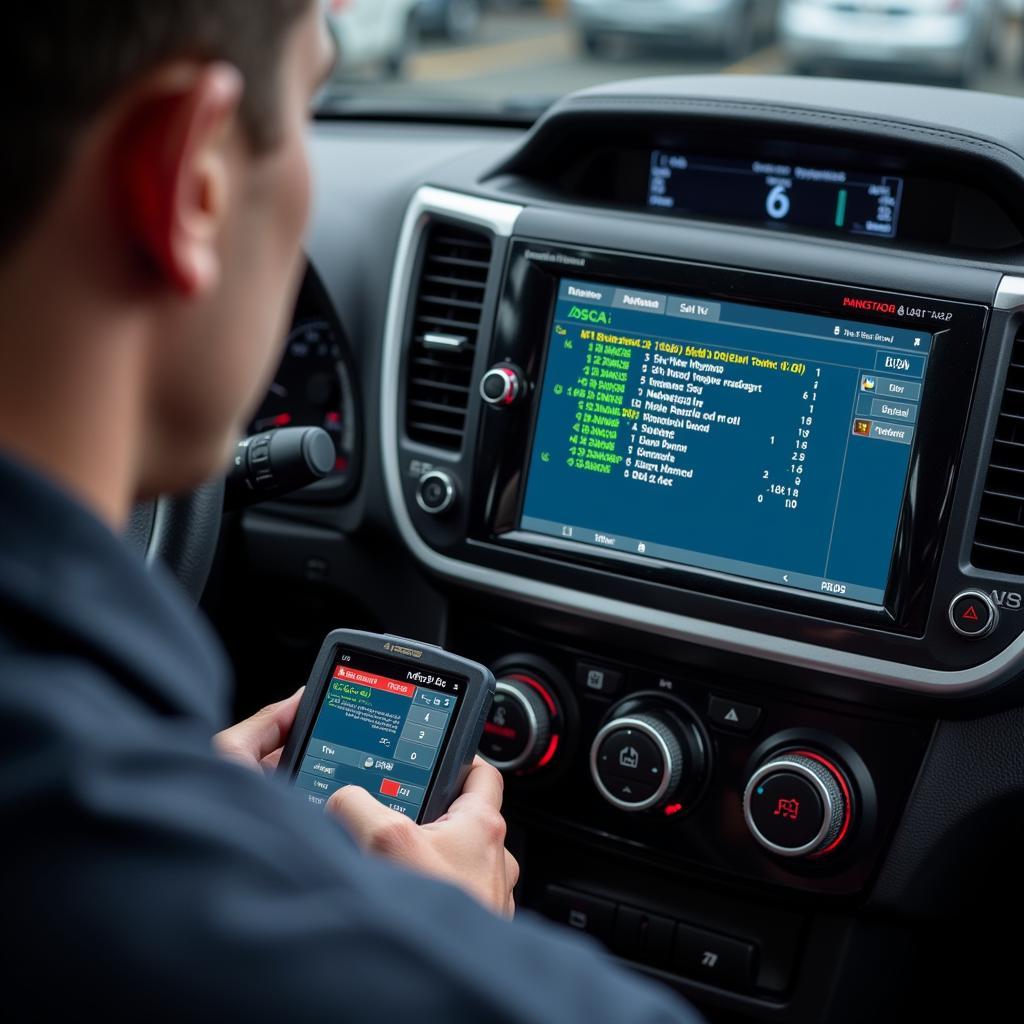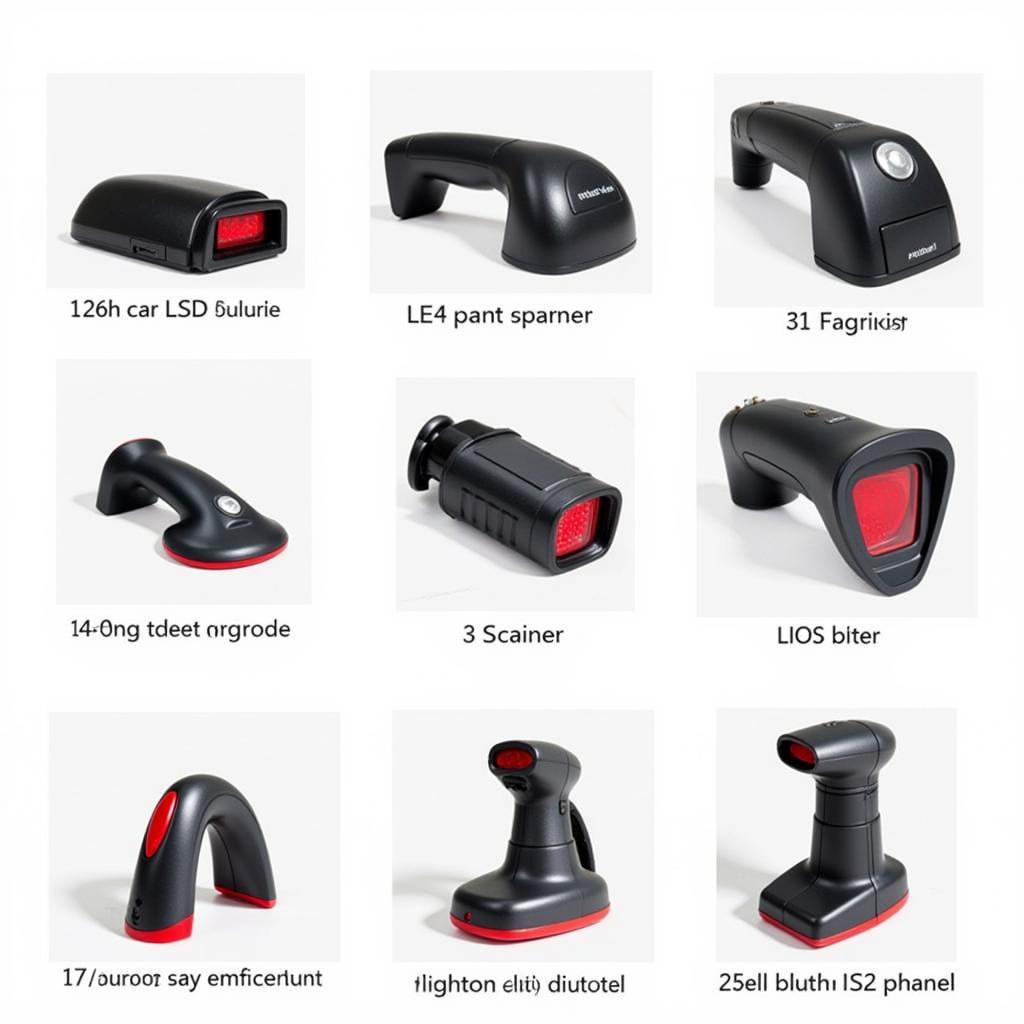Using a scan tool to clear codes is a crucial aspect of modern automotive repair. Whether you’re a professional mechanic or a car enthusiast, understanding how to effectively clear diagnostic trouble codes (DTCs) is essential for diagnosing and resolving vehicle issues. This article provides a comprehensive guide to using a scan tool for clearing codes, covering everything from understanding DTCs to choosing the right scan tool and implementing best practices.
Understanding Diagnostic Trouble Codes (DTCs)
DTCs are alphanumeric codes that represent specific malfunctions detected by your vehicle’s onboard diagnostic system (OBD-II). These codes are like a secret language your car uses to communicate problems. They can range from minor sensor glitches to serious engine or transmission issues. Knowing how to interpret and address these codes is essential for maintaining your vehicle’s health. Similar to how to clear dtc codes without a scan tool, understanding the codes themselves is the first step. These codes are categorized by system, allowing mechanics to pinpoint the problem area quickly. For example, a “P” code indicates a powertrain issue, while a “B” code relates to the body.
Choosing the Right Scan Tool for Clearing Codes
Selecting the appropriate scan tool is vital for effectively clearing codes. There are a variety of scan tools available, ranging from basic code readers to advanced professional-grade diagnostic systems. Basic code readers can retrieve and clear codes, while more advanced tools offer features like live data streaming, bi-directional control, and access to manufacturer-specific codes. Consider your needs and budget when making your decision. A simple code reader may suffice for the average car owner, but professionals often require the advanced functionalities of a high-end scan tool. Remember, using the right tool can save you time and headaches in the long run.
How to Clear Codes with a Scan Tool
The process of clearing codes with a scan tool is generally straightforward, but it’s important to follow the correct procedure. After connecting the scan tool to your vehicle’s OBD-II port, turn the ignition on (but don’t start the engine). Select the “Read Codes” function to retrieve any stored DTCs. Once the codes are displayed, choose the “Clear Codes” or “Erase Codes” option. After clearing the codes, it’s crucial to re-test the system to ensure the issue has been resolved. Sometimes, clearing codes without addressing the underlying problem is like putting a band-aid on a broken bone. You might temporarily mask the symptom, but the issue will likely return. Just like clear codes without a scan tool, using a scan tool to erase codes does not fix the actual mechanical issue.
Why Clear Codes?
Clearing codes is essential for several reasons. It allows you to verify repairs, reset the check engine light, and prepare for emissions testing. Clearing codes also provides a clean slate for further diagnosis. If the codes reappear after clearing, you know the problem hasn’t been fully addressed. Imagine trying to solve a puzzle with some pieces already in place but not knowing if they’re correct. Clearing the codes is like starting the puzzle fresh, giving you a clear picture of the current situation.
Common Mistakes to Avoid When Clearing Codes
Clearing codes without properly diagnosing the underlying issue is a common mistake. Another pitfall is failing to address any pending codes before clearing. Also, using a scan tool incompatible with your vehicle’s OBD-II system can lead to problems. For instance, some European vehicles require a specific type of scan tool. Using the wrong tool can result in inaccurate readings or even damage to the vehicle’s electronic systems. This is similar to using the wrong tool for a home repair project; it can lead to more problems than solutions. You can find more information on opd ii scan tool to better understand the technology.
“Many DIYers make the mistake of clearing codes without understanding their meaning,” says John Miller, ASE Certified Master Technician. “This often leads to misdiagnosis and unnecessary repairs.”
Beyond Clearing Codes: Advanced Diagnostics
While clearing codes is a valuable function, scan tools offer a wealth of other diagnostic capabilities. Live data streaming allows you to monitor real-time sensor data, while bi-directional control enables you to test various components. Accessing manufacturer-specific codes provides more detailed insights into vehicle-specific issues. These advanced features empower you to perform more comprehensive diagnostics, saving you time and money in the long run. You might also find it useful to research the delphi diagnostic scan tool price if you’re looking for a professional option. Similar functionalities apply to how to.clear jeep fault with odbii scan tool.
Conclusion
Scan Tool Clear Codes is a fundamental skill for anyone involved in automotive repair. Understanding DTCs, choosing the right scan tool, and following the correct clearing procedure are essential for effective troubleshooting. By avoiding common mistakes and leveraging advanced diagnostic features, you can confidently diagnose and resolve vehicle issues, keeping your car running smoothly. For personalized assistance with scan tool diagnostics and vehicle repair, feel free to contact us at ScanToolUS. Our team of experts is ready to help you with all your automotive needs.
Contact us:
Phone: +1 (641) 206-8880
Office: 1615 S Laramie Ave, Cicero, IL 60804, USA
FAQs
- What does clearing codes actually do? Clearing codes erases stored DTCs from the vehicle’s memory and resets the check engine light.
- Will clearing codes fix the problem? No, clearing codes only removes the record of the problem; it doesn’t fix the underlying issue.
- How often should I clear codes? Only clear codes after diagnosing and repairing the underlying problem or when preparing for emissions testing.
- Can I clear codes without a scan tool? Yes, there are methods to clear codes without a scan tool, but using a scan tool is the recommended approach.
- What if the codes reappear after clearing? If the codes reappear, it indicates the problem hasn’t been resolved, and further diagnosis is required.
- Do I need a professional-grade scan tool? A basic code reader is sufficient for most DIYers, but professionals benefit from the advanced features of professional-grade scan tools.
- Where can I learn more about specific DTCs? Refer to your vehicle’s repair manual or online resources for detailed information about specific DTCs.
“Investing in a quality scan tool can save you money on repairs in the long run by enabling you to quickly diagnose and address issues,” adds Sarah Johnson, Lead Automotive Engineer.



